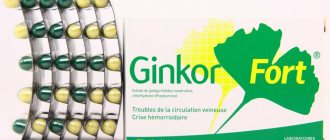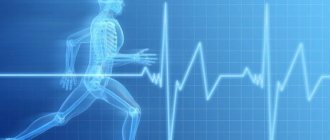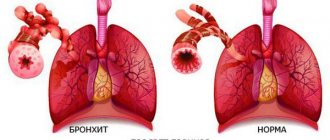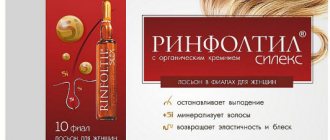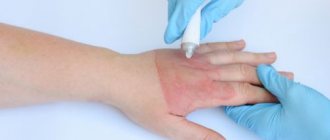Release form and composition
The drug is available in the form of a crushed collection, which is an aromatic yellowish-gray mixture of heterogeneous particles of whole fruits and plant materials interspersed with white, yellow, brown, yellowish-brown, grayish-brown, yellowish-orange and dark brown. The aqueous extract is slightly slimy and has a bitter-sweet-spicy taste.
The collection is packaged in 35 g or 50 g in cardboard packs with an inner plastic or paper bag; the text of the instructions for use of Breast Collection No. 3 is printed on the pack or inserted inside the cardboard box.
Breast collection No. 3 includes:
- licorice roots – 28%;
- marshmallow roots – 28.8%;
- common anise fruits – 14.4%;
- Salvia officinalis leaves – 14.4%;
- Scots pine buds – 14.4%.
Interaction
It is strictly not recommended to take chest collection 3 simultaneously with antitussive drugs that minimize the rate of sputum formation. And also with medications that contain codeine/dextromethorphan. Licorice root, which is one of the components of the herbal medicine, prevents the action of medications that lower blood pressure.
When combining a herbal-based medicinal complex with cardiac glycosides, diuretics/laxatives, and antiarrhythmic drugs, the level of potassium in the blood plasma may decrease. Therefore, you should not take such medications together either. Simultaneous use of antitussive collection No. 3 with antiarrhythmic drugs is fraught with a severe form of ventricular tachycardia.
The heartbeat will become faster due to the increase in the number of ventricular contractions. If you ignore the incompatibility of the herbal medicine with such substances, this will result in insufficient blood supply and provoke loss of consciousness.
All medications that are taken regularly must be reported to your doctor. Otherwise, the main pharmaceutical substances will either be weakened or strengthened. The manufacturer offers a complete list of medications that should not be combined with herbal tea on the packaging or in the instructions inside the box. Drinks containing alcohol should never be consumed during therapy.
Pharmacological properties
Infusion of Chest Collection No. 3 has a pronounced anti-inflammatory and expectorant effect due to the herbal components included in its composition:
- licorice roots [saponin glycyrrhizin ~ 23%, bitter substances ~ 4%, essential oil - in trace amounts, resinous substances - 3-4%, vitamins, proteins and lipids - up to 4%; polysaccharides (consisting of pectin substances and starch) – 4–6%, monosaccharides and disaccharides – up to 20%, flavonoids – 3–4%]: the expectorant properties of licorice are determined by the presence of glycyrrhizin in its roots (it is 50 times sweeter than sugar and gives the root licorice has a sickly sweet taste), which stimulates the activity of epithelial cilia in the trachea and bronchi, promoting the growth of secretory activity in the mucous membranes of the upper respiratory tract. The anti-inflammatory effect of licorice is due mainly to glycyrrhizic acid, released during the hydrolysis of glycyrrhizin, and it manifests itself in a kind of relief of inflammatory reactions;
- marshmallow roots [mucus – 30–35%, monosaccharides (D-glucose, DL-xylose), glucuronic acids, methylpentoses and hexoses; The composition of dry mucus includes reducing polysaccharides (in terms of glucose) – 19.52–21.68%, linear polysaccharide triticin – 5–11%, invert sugars – up to 78%, tannins – 4.11–7.96% , essential amino acids (including asparagine) – 0.8–2%, betaine – up to 4%; starch – 37%, pectin – 11–20%), fat – 2%, organic acids, carotene]: due to the high content of heterogeneous mucus, the roots of the plant have an enveloping, expectorant, anti-inflammatory and slight analgesic effect. Modern pharmacological nomenclature classifies marshmallow roots into the group of antitussives. A decoction of the roots, thanks to its mucous consistency, moistens the vocal cords, entering the trachea, softens the dense coating on its walls, protects the nasopharynx and trachea from irritating factors, accelerates the regeneration of affected areas of the mucous membrane, and facilitates expectoration;
- fruits of anise [fatty oils – 8–30%, essential oil – up to 6%. The composition of the essential oil includes anethole - 80–90%), methyl chavicol (estragole, para-allylanisole) - 10%, anisaldehyde, anise ketone and anisic acid, giving it a characteristic aromatic odor and sweet taste]: anti-inflammatory, antispasmodic and expectorant natural a means that improves the liquefaction and expectoration of mucus, accelerates the evacuation of secretions and products of inflammation of the mucous membrane from the respiratory tract, and has a bactericidal effect. Anise preparations demonstrate the greatest therapeutic effectiveness in the treatment of respiratory diseases complicated by bacterial infections;
- Salvia officinalis leaves [essential oils – up to 2.5% (including cineole – up to 15%, α- and β-pinene, linalool, thujone, borneol and its acetate, linalyl acetate and other terpene compounds), tannins, vitamins P and PP, flavonoids, alkaloids, resinous compounds, triterpenoids (ursolic and oleanolic acids, diterpene salvin), phenolcarboxylic acids (including caffeic and rosemary), bitterness and phytoncides]: main beneficial properties - antimicrobial, astringent and anti-inflammatory , are due to the pharmacological effectiveness of the active substances contained in the leaves;
- Scots pine buds [essential oils – 0.36% (including limonene, pinene, bornyl acetate, borneol, cadinene) resins, tannins, starch, bitter substance pinicicrin]: have a stimulating effect on the secretory activity of the mucous membranes of the upper respiratory tract, thereby promoting the liquefaction of viscous mucus in the bronchi, have an expectorant effect, which is also due to stimulation of the cilia of the epithelium of the mucous membranes, at the same time they have a bactericidal effect on pathogenic microflora in the oral cavity and oropharynx.
Overdose
Due to long-term therapy (more than 3-6 weeks) or exceeding the dose of herbal medicine, hypokalemia develops, blood pressure increases, and heart rhythm is disturbed.
Symptoms such as:
- excessive accumulation of gases in the intestines, frequent loose stools;
- angioedema (less commonly, anaphylactic shock);
- myopathy, myoglobinuria;
- hypertensive encephalopathy;
- headache of varying severity, which entails weakness, apathy and drowsiness.
If one of these symptoms of overdose makes itself felt, you should immediately stop taking the medication and, if possible, visit a doctor. He will determine the scheme for further use of the herbal medicine or replace it with something else. It is worth noting that there is currently no medicine with a specific effect that could stop or weaken the effect of an overdose.
Breast collection No. 3, instructions for use: method and dosage
Breast collection No. 3 for cough is taken orally as an infusion.
To prepare it, pour 2 tablespoons (about 10 g) of the raw material into an enamel container and pour 1 cup (200 ml) of boiling water, then cover with a lid and heat in a water bath for 15 minutes. After this, the infusion is cooled for about 45 minutes at room temperature, filtered, and the remaining raw materials are squeezed out well. Boiled water is added to the resulting aqueous extract to bring the volume to 200 ml.
Infusion of Breast Collection No. 3 is taken warm 3 times a day, ½ cup (after meals). The duration of treatment is 2–3 weeks. The infusion must be shaken before use.
special instructions
Breast collection 3, the composition of which has been famous since ancient times, is used in the field of clinical medicine, which studies the health of a child in the process of its development (pediatrics). In laboratory conditions, the results of the influence of herbal medicine on children older than six months have already been thoroughly studied. But giving the drug to a child who has not reached 6 months is not advisable. Elderly patients do not need to reduce the dosage.
As well as people with impaired renal function, in which the glomerular filtration rate is more than 30 ml. No dose adjustment is required for liver diseases belonging to group A according to the Child-Pugh classification. This is an assessment technique designed to determine the severity of cirrhosis or other pathological condition of the liver. If the damage to these organs has become more severe, it is prohibited to take the chest collection from plants No. 3.
It is important to mention the use of the collection for preparing a decoction/tincture during pregnancy and lactation. Scientists have studied the effects of its influence on the fetus. Despite the fact that the period of gestation and breastfeeding belongs to the group of contraindications for the use of the collection, after consultation with a gynecologist, it is possible to use minimal dosages. Prepare the decoction for pregnant women according to the algorithm described earlier.
The herbal medicine does not affect the patient’s psychomotor abilities. The person can still drive a vehicle and engage in potentially hazardous activities that require maximum concentration.
You can purchase this herbal medicine at any pharmacy. A prescription from a specialist is not required to make a purchase. Storage conditions for the drug collection must be optimal. It is important that the place is inaccessible to children, moisture and sunlight. The storage location must also maintain a temperature regime of 15 to 25 degrees. Store the prepared mixture for no more than 2 days at a temperature of 10-15 degrees.
The average cost of one package of herbal tea 3 (volume 50 g) is 100 rubles. If the drug is not available in the pharmacy, you can replace it with a medicine or dietary supplement with an identical content of active ingredients. For example, Ascoril, Ingalin, Altemix and so on.
Chest collection 3 is an excellent anti-inflammatory, bronchodilator for preparing an infusion. Its composition is able to fight inflammatory diseases of the respiratory system and effectively treat obstructive pathologies. And the production of this herbal medicine is carried out by pharmaceutical companies that specialize in the production of different types of herbal tea.
Reviews about Breast collection No. 3
According to reviews, Chest collection No. 3 is a natural and effective remedy for treating cough. Patients note that the drug is an indispensable aid for diseases of the upper respiratory tract, quickly cures cough, and is absolutely harmless.
However, according to some users, the product is not very effective for severe diseases and does not provide quick results. Another disadvantage is that it is contraindicated for use in children under 12 years of age and pregnant women. The taste of the infusion is quite specific and not all patients like it.
Indications
Cough can be either wet or dry, and the mechanism of development of symptoms is different for them. A dry cough is triggered by chemical or mechanical irritation of the receptors that are located in the mucous membrane of the pharynx and larynx. And the catalyst for a wet cough is a dysfunction of the bronchial glands. Chest collection 3 is prescribed for severe irritation of the respiratory tract, which interferes with air flow, with mucus difficult to clear.
The composition of the drug, which dilates blood vessels and reduces the intensity of inflammation in the upper respiratory tract, will be effective for the following diagnoses:
- infectious tracheitis, tracheobronchitis;
- pharyngitis, laryngitis, and other diseases caused by staphylococci/streptococci;
- tuberculosis;
- acute respiratory viral infections;
- inflammation of the lung tissue (pneumonia);
- bronchial asthma;
- any type of bronchitis (fungal, bacterial, asthmatic).
It is important to select a herbal preparation based on the symptomatic picture. It is even better to consult a doctor so that he can draw up a treatment regimen.

